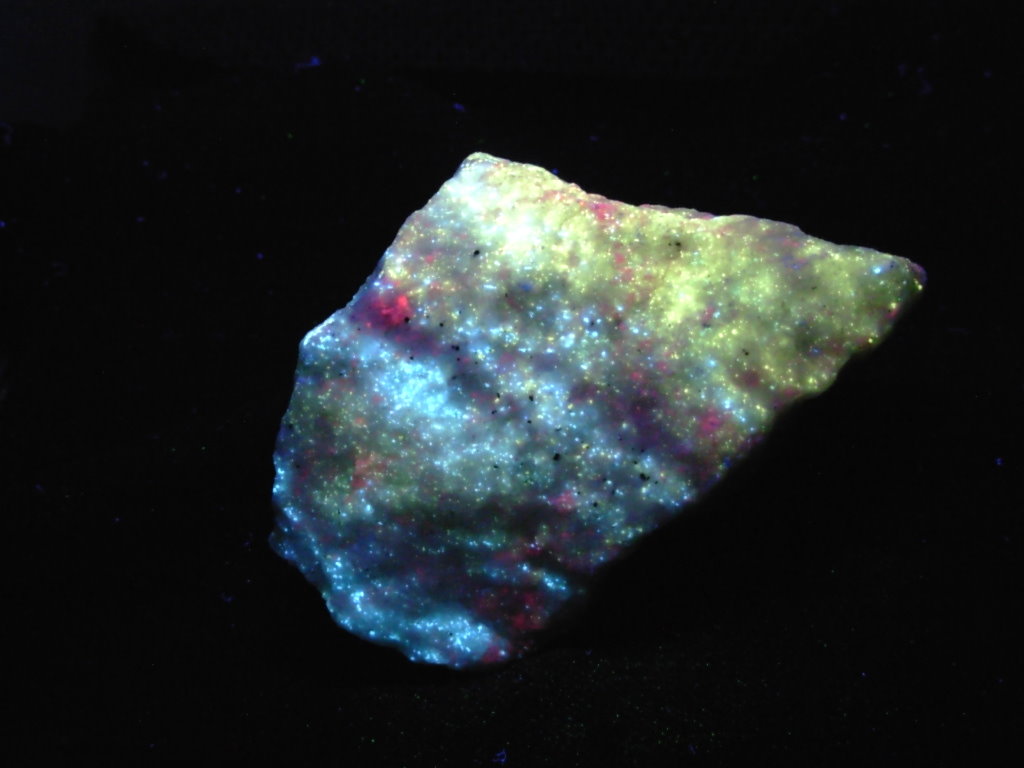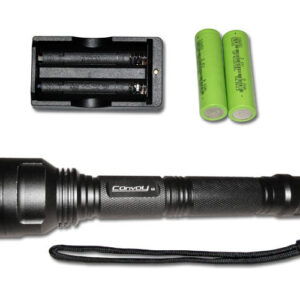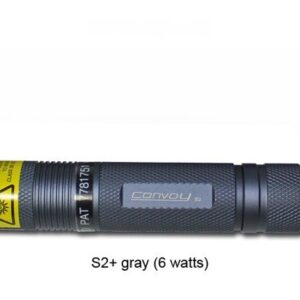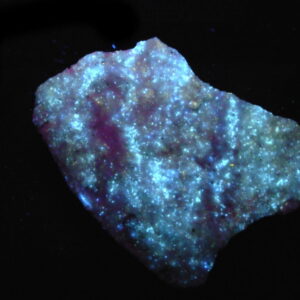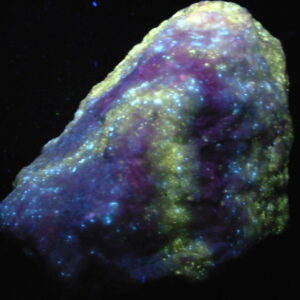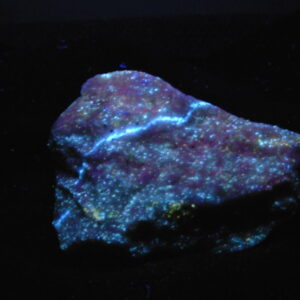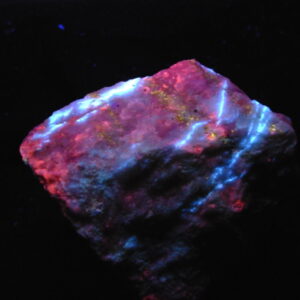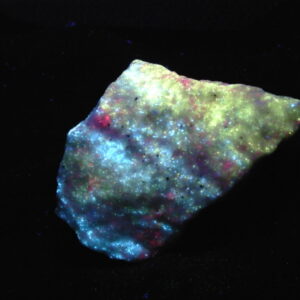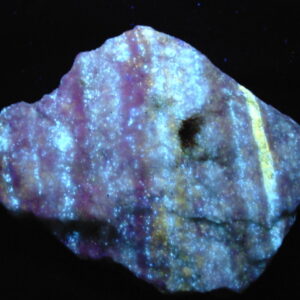Fluorescent Minerals of Canada
...Notice...
Fluorescent Specimens listed on this Page will require a Short Wave (SW) Ultraviolet light, or a Medium Wave(MW) Ultraviolet light, or a Long Wave (LW) Ultraviolet light.
These Will Not Fluoresce under a "Black Light"
The Long Lake Zinc Mine is actually located in Long Lake, New York. It is known for producing specimens that exhibit a variety of pastel fluorescent colors under UV light….Wait a Minute!....many specimens available today are sold with statements that they come from the Long Lake Zinc Mine in Parham, Olden Township, Frontenac County, Ontario, Canada.
Confused? You bet!….so were we…. until we did some investigating. There is a zinc mine in Olden Township near Parham, Frontenac County, Ontario, Canada. This mine has been a long time producer of specimens and has had active mining on and off from 1901 to its closing in 1974. It was originally called the Richardson Mine (purchased by J. Richardson in 1902 after zinc was discovered on the property).
It has become known as the “Long Lake Zinc Mine”, because in 1914 and 1915, the Long Lake Zinc Company took an option on the property from J. Richardson. That did not last for long however. J, Richardson retained ownership of the mine and gave options two more times. From 1947 to 1950 Rochette Gold Mines Ltd had an option and in 1966 Mid South Explorations Ltd. had an option.
In 1970 Lynx Canada Explorations Ltd in partnership with Canadian Reynolds Metals Ltd purchased the mining rights and leased the surface rights. Their ownership continued until December 31, 1974 when the mine was closed. The property has been sold by its previous longtime owner Mr. Young, who used to let collectors visit with permission. The new owners, whose names we do not know, have posted Private Property (no trespassing) signs and the property is no longer available for collecting. This is the most current information we have found about this elusive mine.
The minerals most often found and the colors they fluoresce at Long Lake Zinc Mine are in specimens which contain Chondrodite or Humite (Yellow), Diopside or Hydrozincite (Blue), Aragonite (Lightning Bolt White) and Calcite (dull Red) under SWUV Light. These pastel color combinations are exclusive to this area and are easily identifiable. Although they were readily available in past years we will have to wait and see what the new mine owner’s intentions are.
-
Convoy C8+ UV LED Flashlight with LG 365nm UV LED (black) ON RESERVE
$79.00 Read more -
Convoy S2+ UV 365nm with LG LED Flashlight 6W Grey
$69.00 Read more -
Fluorescent 1 Premium Chondrodite and Diopside on Calcite
$48.00 Add to cart -
Fluorescent 2 Chondrodite and Diopside on Calcite
$32.00 Read more -
Fluorescent 3 Aragonite (Lightning Bolts) on Chondrodite and Diopside on Calcite
$31.00 Add to cart -
Fluorescent 4 Aragonite (Lightning Bolts) and Minor Chondrodite on Calcite
$35.00 Add to cart -
Fluorescent 5 Chondrodite and Diopside on Calcite
$33.00 Add to cart -
Fluorescent 6 Chondrodite and Diopside on Calcite
$44.00 Add to cart
The following historical information was written and provided by Mindat.
"The former Long Lake zinc mine is located in the south central part of Olden Township, approximately 8 km by road northwest of the village of Parham. The Long Lake zinc deposit has supported small-scale mining operations by different operators several times since its discovery in 1897.
Early production included more than 100 tons of ore removed in 1901; between 1902 and 1907 about 3442 tons of zinc ore were shipped from the property; and in 1949 a total of 240 tons of zinc concentrates and 15 tons of lead concentrates were reported to have been produced.
On March 1, 1973, Lynx-Canada Explorations Ltd. in partnership with Canadian Reynolds Metals Ltd. commenced mining of three newly discovered ore lenses (A,B, and C)west of the previously mined orebodies, using an underground ramp for access and modern trackless mining equipment. Between March 1, 1973, and the closing of the mine on December 31,1974, a total of 94,631 short tons of ore averaging 11.6 percent zinc were mined and milled.
The Long Lake zinc deposit occurs within a remnant of calcitic marble which forms a xenolith within a large gabbroic intrusion termed the Mountain Grove Mafic Intrusion. The marble remnant has total strike length of about 1 km and is up to 180 metres wide. Layering in the marbles strikes northeast and generally dips steeply to the northwest. These types of marble are distinguished as
- Very coarse-grained (1cm), massive, calcitic marble.
- Laminated calcitic marble; and
- Layered, siliceous calcitic marble.
Mineralization at the Long Lake zinc deposit consists principally of sphalerite, with accessory pyrite and pyrrhotite, and minor galena, chalcopyrite, and molybdenite, contained within conformable lenses in the Long Lake marble remnant."

